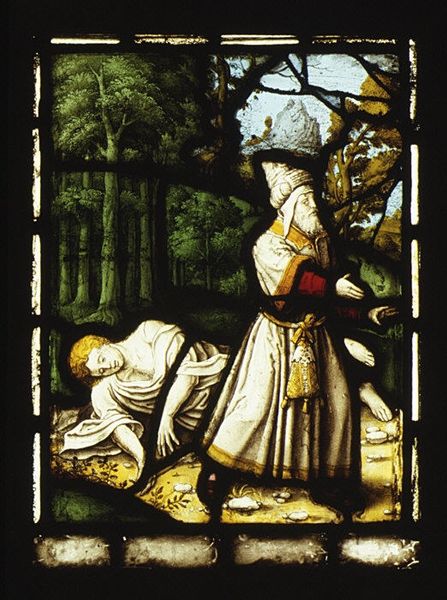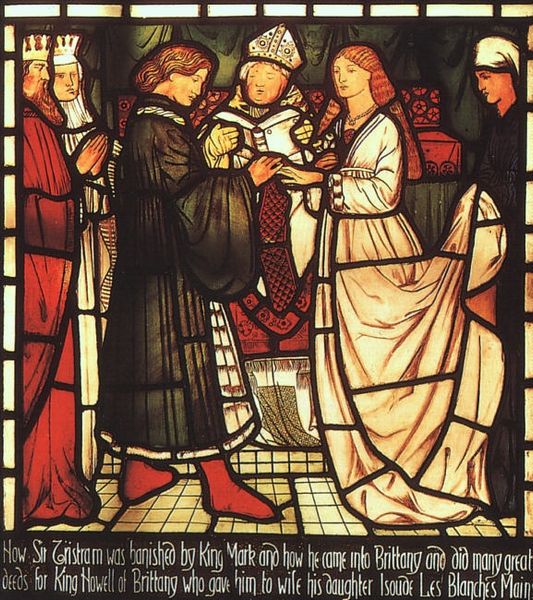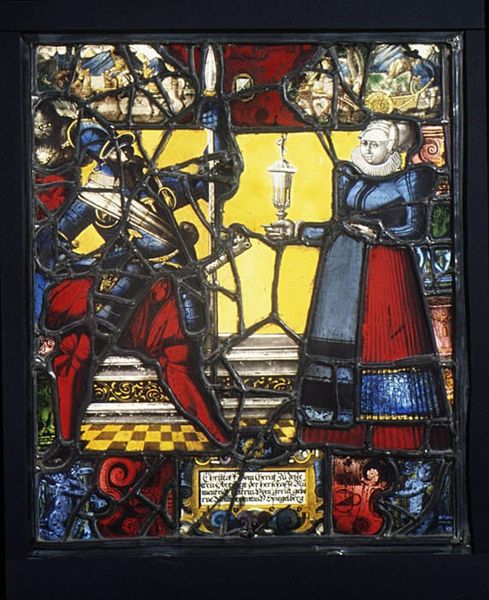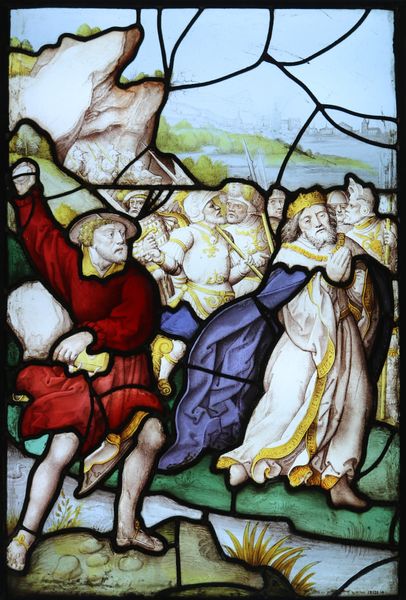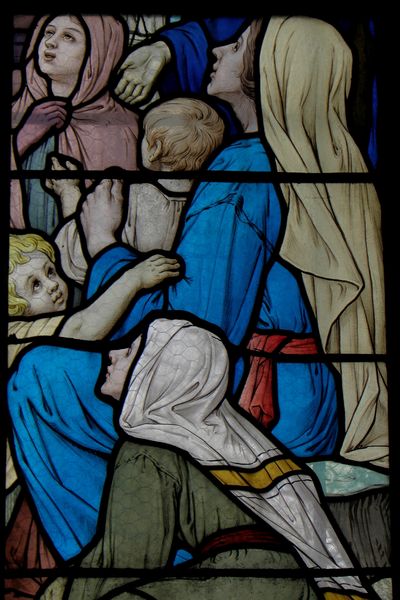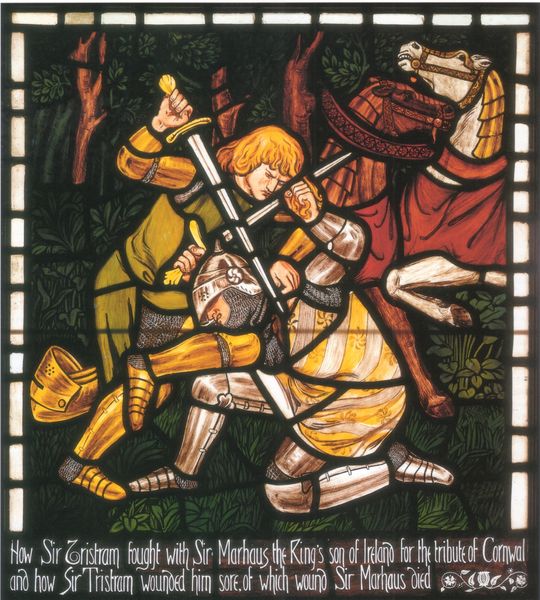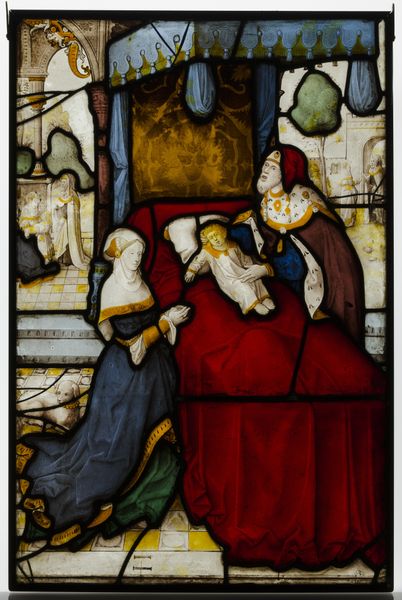
The Death of Sir Tristan, from 'The Story of Tristan and Isolde', William Morris & Co.
0:00
0:00
fordmadoxbrown
Bradford Museums and Galleries, Bradford, UK
#
medieval
#
narrative-art
#
arts-&-crafts-movement
#
stain glass
#
history-painting
#
stained glass
Dimensions: 61 x 77 cm
Copyright: Public domain
Editor: This stained glass piece depicts "The Death of Sir Tristan," and the artwork itself is credited to William Morris & Co. It's a rather somber scene, the colors are deep, and it really has this medieval narrative quality about it. What do you see when you look at it? Curator: Well, immediately I'm struck by the reinterpretation of the Tristan and Isolde story within the context of the Arts and Crafts movement. This wasn't just about aesthetic beauty; it was a socio-political statement. Look at how the Pre-Raphaelite ideals influenced the piece, focusing on the tragic aspects of courtly love, which actually serves to critique the societal structures and constraints. Notice also how the composition is drawing from medieval tapestries or illuminated manuscripts, popularizing traditional narratives and artistic techniques. Considering the sociopolitical view, who would benefit from displaying tragic stories that critique power structure within stained glass, which is largely connected with church design and display? Editor: That's a fascinating angle! It’s not just a pretty picture, it's making a commentary on power dynamics. Would people seeing the art at the time think it critique towards them? Curator: Absolutely. The late 19th-century audience, steeped in Victorian morality and industrial capitalism, was being challenged to question these values by romanticized depictions of historical narratives through pieces like this, and through the very medium of stained glass removed from a purely religious space. Morris believed in art’s ability to catalyze social change, and this piece speaks volumes to those ideas. Do you see how the narrative is shaped to make a political point? Editor: Yes, the dramatic scene with a story many people knew from culture almost weaponizes it for artistic criticism. It encourages you to question the society around you. This certainly gave me a deeper appreciation for the complexity of the work. Thanks! Curator: Indeed, recognizing the cultural and political landscape can change our understanding entirely, enriching our engagement with the art.
Comments
No comments
Be the first to comment and join the conversation on the ultimate creative platform.
